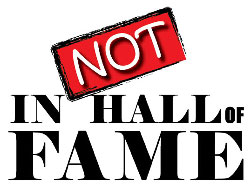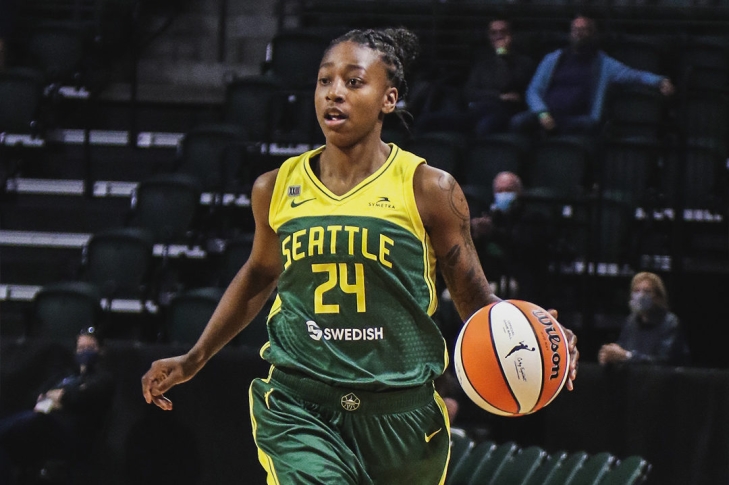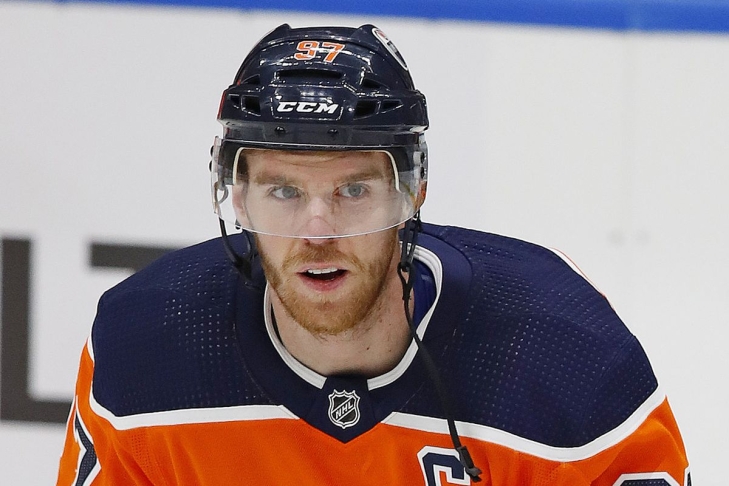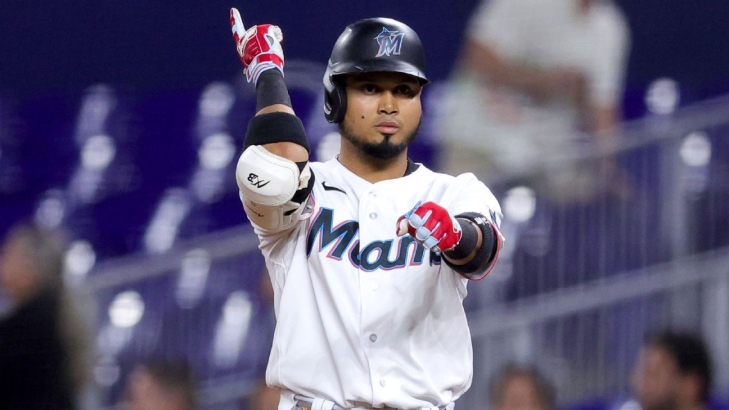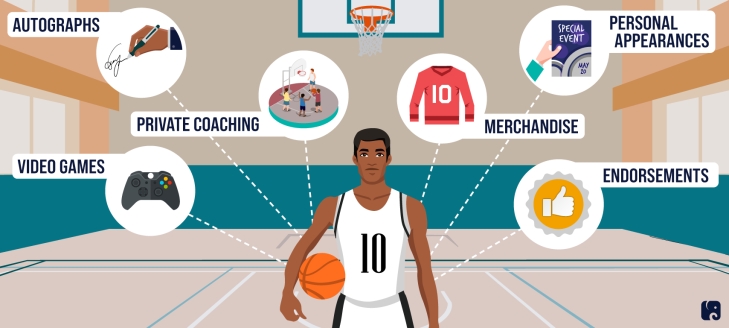
Committee Chairman
June 27 Update: Notinhalloffame WNBA Cup Standings.
Including this year, we have awarded the NIHOF NBA Cup by awarding the best five players in the game with descending points, 5-4-3-2-1. Obviously, we can’t watch all the games, but box scores and write ups give an approximate idea as to who were each game’s top five.
This year, we decided to the same for the WNBA.
The top players for the WNBA NIHOF Cup are not always the best in the league, as injuries keep players out of games, and a premium on staying healthy can help pile up points. It also does not hurt to be a top player on an average or mediocre team, as they can amass Cup points easier that elite players on loaded squads.
Please remember, that this is NOT necessarily who we think were the best players this year, and does not reflect overall consistency, but snapshots of each game.
Treat this the way did, as a fun process and more of a compilation of temporary statistical domination.
So, like we said the last two years, WNBA players! Get your agents to work winning this into your contracts!
This is our third update.
Here are the 2023 top ten rankings for the WNBA NIHOF CUP:
1 (TIE). Alyssa Thomas: Connecticut Sun, Forward: (#1 Last Week)
53 PTS, 15 Games, 3.53 Cup Points per Game, 14.8 PPG, 10.5 RPG, 7.9 APG, 2.0 SPG, 0.3 BPG, 21.5 PER, 2.9 WS.
Thomas remains a surprise leader, as she is the wrong side of 30, but the three-time All-Star is posting the best numbers of her career, which included her setting a WNBA record with her fourth WNBA regular season triple-double. Her traditional metrics are the significantly higher than in previous years, and she is averaging a double-double. She is at present the league leader in Rebounds (157), Assists (118) and Steals (30) and her per Game averages are better than ever. It will be interesting to see if she can hold on to the top spot.
1 (TIE). Nneka Ogwumike: Los Angeles Sparks, Forward: (#2 Last Week)
53 PTS, 13 Games, 4.08 Cup Points per Game, 20.2 PPG, 9.7 RPG, 3.5 APG, 1.7 SPG, 0.8 BPG, 27.6 PER, 2.8 WS
The 2018 MVP has never finished over 20 Points per Game but Ogwumike is over that now. Currently, Ogwumike fifth in Points (20.2) and Rebounds per Game (9.7), while also being sixth in PER (27.6). She is in a tie with Thomas for the top spot, but has played two less Games, and the pundits have her as a more viable MVP candidate.
3. A’Ja Wilson: Las Vegas Aces, Forward: (#3 Last Week)
49 PTS, 13 Games, 3.77 Cup Points per Game, 19.3 PPG, 9.4 RPG, 2.1 APG, 1.2 SPG, 2.2 BPG, 30.8 PER, 3.2 WS.
Wilson is the reigning and two-time MVP, and is second in Blocks (2.2), sixth in Rebounds (9.4) and seventh in Points per Game (19.3). She is also second in PER (30.8).
4. Napheesa Collier: Minnesota Lynx, Forward (#7 Last Week)
41 PTS, 13 Games, 3.15 Cup Points per Game, 20.9 PPG, 7.5 RPG, 2.5 APG, 1.5 SPG, 1.1 BPG, 25.5 PER, 1.9 WS
The 2019 WNBA Rookie of the Year is fourth in Points per Game (20.9) and Steals per Game (1.8).
5 (TIE). Jackie Young: Las Vegas Aces, Guard: (#5 Last Week)
39 PTS, 14 Games, 2.79 Cup Points per Game, 19.9 PPG, 3.7 RPG, 3.1 APG, 1.5 SPG, 0.1 BPG, 27.7 PER, 3.3 WS.
Young is fifth in PER (27.7) and is sixth in Points per Game (19.9). The Ace’s Guard has proven herself as one of the top shooters in the league, as she is second True Shooting Percentage (.706) and is the league-leader in Effective Field Goal Percentage (.670).
5 (TIE). Breanna Stewart: New York Liberty, Forward: (#6 Last Week)
39 PTS, 12 Games, 3.25 Cup Points per Game, 22.5 PPG, 10.4 RPG, 4.1 APG, 1.7 SPG, 1.8 BPG, 30.5 PER, 3.3 WS
Stewart is on fire thus far in her first season in New York, and is averaging a double-double; a mark she has never finished a season with. She is third in PER (30.5), and is second in both Points and Rebounds per Game.
7. Satou Sabally: Dallas Wings, Forward: (#4 Last Week)
37 PTS, 14 Games, 2.64 Cup Points per Game, 18.6 PPG, 9.9 RPG, 3.3 APG, 1.6 SPG, 0.3 BPG, 21.0 PER, 2.0 WS
Like Alyssa Thomas, Sabally is averaging nearly close to a double-double but is nearly doubling last year’s metrics. The fourth-year player is currently fourth in Rebounds (9.9) and is ninth in Points per Game (19.5).
8. Elena Delle Donne: Washington Mystics, Forward: (#8 Last Week)
35 PTS, 12 Games, 2.92 Cup Points per Game, 18.1 PPG, 6.3 RPG, 2.8 APG, 0.9 SPG, 0.3 BPG, 22.6 PER, 2.0 WS
The future first ballot Hall of Fame inductee is currently tenth in PPG (18.1) and PER (22.6).
9. Jewell Loyd: Seattle Storm, Guard:
33 PTS, 12 Games, 2.75 Cup Points per Game, 25.4 PPG, 4.1 RPG, 3.7 APG, 0.6 SPG, 0.8 BPG, 23.2 PER, 1.3 WS
Loyd is the current leader in PPG (25.4), though this has not generated a lot of wins for Seattle. She is also the league leader in Usage Percentage (32.8).
10. Arike Ogunbowale: Dallas Wings, Guard:
31 PTS, 14 Games, 2.21 Cup Points per Game, 22.4 PPG, 3.1 RPG, 4.4 APG, 1.5 SPG, 0.1 BPG, 16.6 PER, 1.2 WS
Ogwunbowale returns to the top ten and is the current leader in Field Goals (108). She is also third in Points per Game (22.4).
Atlanta’s Cheyenne Parker fell off of the top ten.
Our next update will be on the July 3.
Connor McDavid wins the 2022/23 Notinhalloffame NHL Pure Cup
It is with great pleasure that we announce the third annual Notinhalloffame NHL Pure Cup, and let us explain how this works:
June 26 Update: Notinhalloffame MLB Cup Standings.
It is with great pleasure that we continue the third annual Notinhalloffame MLB Regular Season Cup, and let us explain how this works:
With every single regular season game, we anointed the best five players in the game with descending points, 5-4-3-2-1.
We knew the following:
- The top players for the MLB NIHOF Cup are not always the best in the league, as injuries keep players out of games, and a premium on staying healthy can help pile up points. It also does not hurt to be a top player on an average or mediocre team, as they can amass Cup points easier that elite players on loaded squads.
- In Baseball, it is more common than in Basketball and Hockey for a player to accrue points with a single Home Run in a game, and overall favors position players. Starting Pitchers have a hard time with approximately 30-35 Starts and throwing less innings than in previous generations. This also is true for closers, which is not made for this process.
- Please remember, that this is NOT necessarily who we think were the best players this year, and does not reflect overall consistency. Treat this the way did, as a fun process and more of a compilation of temporary statistical domination.
At present 865 (up from 847 last week) Players have generated at least one Cup Point.
So, MLB players! Get your agents to work winning this into your contracts!
This is the eighth update, with standings as of the morning of June 26.
1. Shohei Ohtani: Los Angeles Angels, Designated Hitter & Pitcher: (Ranked #1 last week)
126 Cup Points, 77 Games, 1.64 Cup Points per Game, 25 Home Runs, 61 Runs Batted In, 10 SB, .297/.377/.623, 5.4 bWAR & 6-3, 3.13 ERA, 117 SO, 1.045 WHIP.
The Notinhalloffame Cup is built for Ohtani, who can compile points in two different avenues; the only one who can do so. Ohtani has been brilliant this week, and the chasm between the top spot and second spot has never been higher. He is off to a good pitching start, leading the AL in H/9 (5.7), SO/9 (11.8) and is third in Strikeouts (117). With his bat, Ohtani is the current American League leader in Home Runs (25), Runs Batted In (61), Slugging (.623), OPS (1.001) and OPS+ (170) and Total Bases (187). The AL MVP is his to lose.
2. Ronald Acuna: Atlanta Braves, Outfield: (Ranked #2 Last Week)
94 Cup Points, 77 Games, 1.22 Cup Points per Game, 16 Home Runs, 47 Runs Batted In, 35 SB, .328/.402/.561, 4.2 bWAR.
Acuna leads all National League batters in Stolen Bases (30), Runs Scored (67), Slugging (.561), OPS (.962) Total Bases (176) and bWAR (4.2). He is also second in Batting (.328), and fifth in OBP (.402).
3. Juan Soto: San Diego Padres, Outfield: (Ranked #5, Last Week)
89 Cup Points, 79 Games, 1.13 Cup Points per Game, 14 Home Runs, 41 Runs Batted In, 6 SB, .273/.425/.502, 3.4 bWAR.
Soto is still the National League leader in Walks (71) and is second in OBP (.425). He is also fourth in OPS (.927).
4. Luis Arraez: Miami Marlins, Second Base: (#8, Last Week)
85 Cup Points, 73 Games, 1.16 Cup Points per Game, 3 Home Runs, 33 Runs Batted In, 1 SB, .388/.451/.493, 3.5 bWAR.
Arraez is flirting with a .400 Batting Average and he is currently the National League leader in Hits (111), Batting Average (.399) and On Base Percentage (.451). He also has a very impressive Slugging Percentage (.493) for a player with only three Home Runs.
5. Jorge Soler: Miami Marlins, Outfield & Designated Hitter: (#3, Last Week)
84 Cup Points, 75 Games, 1.12 Cup Points per Game, 21 Home Runs, 45 Runs Batted In, 1 SB, .247/.345/.524, 1.2 bWAR.
Soler is playing more and more at DH this year, but he is providing the Marlins incredible offense. He is third in NL Home Runs (21), and ninth in Slugging (.524).
6. Rafael Devers: Boston Red Sox, Third Base: (Ranked #6 Last Week)
83 Cup Points, 75 Games, 1.07 Cup Points per Game, 18 Home Runs, 60 Runs Batted In, 0 SB, .241/.312/.486, 1.3 bWAR.
Devers holds strong on at #6 and is currently second in the AL in RBIs (60) and fourth in Home Runs (18).
7. Corbin Carroll: Arizona Diamondbacks, Outfield: (Ranked #4, Last Week)
81 Cup Points, 62 Games, 1.16 Cup Points per Game, 16 Home Runs, 41 Runs Batted In, 23 SB, .290/.369/.558, 3.7 bWAR.
Carroll is running away with the National League Rookie of the Year Award, and it is only June! At present, the young Outfielder is third in the National League in bWAR (3.7), and is in the top ten in Batting Average (.290), OBP (.369), Slugging (.558), Runs (59), Home Runs (18) and Stolen Bases (23).
8. Matt Olson: Atlanta Braves, First Base: (Ranked #10 Last Week)
78 Cup Points, 75 Games, 0.96 Cup Points per Game, 25 Home Runs, 58 Runs Batted In, 1 SB, .238/.350/.541, 1.8 bWAR.
Olson took over the National League lead in both Home Runs (25), RBIs (60) and is sixth in Slugging (.541)
9. Marcus Semien: Texas Rangers, Shortstop: (Ranked #9, Last Week)
75 Cup Points, 77 Games, 0.97 Cup Points per Game, 10 Home Runs, 54 Runs Batted In, 7 SB, .278/.339/.459, 3.3 bWAR.
Semien is having an outstanding 2023, though he has substantially cooled off in the last three weeks. He is the current AL leader in Runs Scored (62) and is fourth in bWAR for Position Players (3.3).
10 (TIE). Alex Bregman: Houston Astros, Third Base: (Not in the Top Ten Last Week)
74 Cup Points, 77 Games, 0.96 Cup Points per Game, 11 Home Runs, 49 Runs Batted In, 3 SB, .248/.342/.408, 1.9 bWAR.
Bregman gives Houston a top-ten entrant, and is currently tenth (49) in American League RBIs.
10 (TIE). Mookie Betts: Los Angeles Dodgers, Outfield: (Not in the Top Ten Last Week)
74 Cup Points, 77 Games, 0.96 Cup Points per Game, 19 Home Runs, 47 Runs Batted In, 6 SB, .258/.354/.512, 2.6 bWAR.
Betts returns to the top ten, and is ninth in RBIs (47).
New York’s (AL) Aaron Judge fell out of the top ten.
Our next update will be the afternoon of July 3.
Christopher Linton Explains Why The Name, Image, And Likeness Policy Is Important For Athletes
In the world of sports, athletes possess remarkable talent, skills, and dedication that captivate millions of fans around the globe. However, for decades, these talented individuals at the collegiate level have been restricted from leveraging their name, image, and likeness (NIL) for personal gain. Thankfully, the recent implementation of the Name, Image, and Likeness policy has brought about a transformative change, empowering athletes to capitalize on their hard-earned fame. Today, Christopher Linton explores the significance of the NIL policy and its positive impact on athletes.
Empowering Athletes
The NIL policy represents a significant milestone in the sports industry, giving college athletes control over their brand and image. Before this policy, college athletes were often subjected to strict rules and regulations imposed by an archaic NCAA, preventing them from monetizing their personal brand. With the NIL policy, athletes can pursue endorsement deals, brand collaborations, and various entrepreneurial ventures that align with their interests and values.
Financial Stability And Compensation
One of the most notable advantages of the NIL policy is its potential to provide athletes with much-needed financial stability and compensation.
Many collegiate athletes dedicate countless hours to training and competing, often sacrificing their academic pursuits and personal lives. However, they were not allowed to benefit financially from their athletic achievements.
The NIL policy allows athletes to enter into sponsorship agreements, sell merchandise, or monetize their social media presence, offering them a chance to earn income while pursuing their athletic dreams.
Educational Opportunities
The NIL policy also opens doors for athletes to explore educational opportunities that were previously out of reach.
Student-athletes often face the dilemma of balancing their athletic commitments with their studies. With the ability to earn money through NIL agreements, athletes may have the financial means to pursue higher education or invest in personal development programs, expanding their horizons beyond the realm of sports.
Fostering Entrepreneurship And Business Acumen
By allowing athletes to engage in entrepreneurial activities, the NIL policy encourages them to develop valuable business skills and unlock their entrepreneurial potential.
Athletes possess unique insights into the world of sports, and their personal brand has the potential to attract loyal consumers. Through endorsements, collaborations, and establishing their own businesses, athletes can gain valuable experience in marketing, negotiation, and strategic decision-making, setting them up for success both during and after their athletic careers.
Promoting Equality And Fairness
Implementing the NIL policy also plays a crucial role in promoting equality and fairness within the sports industry.
Previously, professional athletes primarily enjoyed the benefits of athlete endorsements, leaving college athletes with limited opportunities. The NIL policy ensures that athletes at all levels have the same rights to profit from their NIL, creating a more level playing field and reducing the disparities between collegiate and professional athletes.
Enhancing Fan Engagement And Connection
The NIL policy fosters a deeper connection between athletes and their fans by allowing athletes to personally engage with their followers.
Athletes can leverage their social media platforms to share their stories, insights, and experiences, creating a sense of authenticity and relatability. This increased interaction can lead to stronger fan and brand loyalty and heightened engagement, benefiting athletes and fans.
Personal Brand Development
The NIL policy enables athletes to shape and develop their brand actively. Athletes are no longer restricted to being solely seen as athletes on the field but can now showcase their unique personalities, values, and interests off the field.
They can collaborate with brands and companies that align with their brand, allowing them to authentically express themselves and connect with their audience. This enhances their marketability and gives them a platform to inspire and positively influence others.
By embracing the power of their brand, athletes can become role models, advocates, and ambassadors for causes they deeply care about. They can use their platform to raise awareness for important social issues, support charitable initiatives, and inspire positive social change.
Long-Term Career Development
The NIL policy plays a crucial role in the long-term career development of athletes. While sports careers can be rewarding, they are often short-lived due to factors such as age, injuries, or retirement. By allowing athletes to capitalize on their name, image, and likeness, the policy enables them to establish a solid foundation for their post-athletic careers.
Athletes can use the financial resources gained through NIL agreements to invest in education, professional development, and entrepreneurial endeavors supporting their transition into other industries. This proactive approach to career planning ensures that athletes have options and opportunities beyond their time in sports, reducing the likelihood of sudden career changes and the challenges associated with the post-athletic transition.
Conclusion
Christopher Linton says the Name, Image, and Likeness policy does not only benefit athletes during their athletic careers but also sets them up for long-term success in various aspects of life. The policy supports their overall career development by empowering athletes to leverage their brand, pursue financial stability, and explore educational and entrepreneurial opportunities. It ensures that athletes can thrive during and after their time in sports, creating a positive and sustainable future for athletes across all levels and disciplines.
